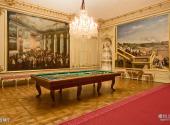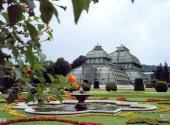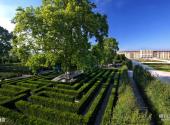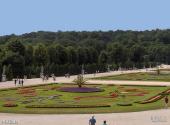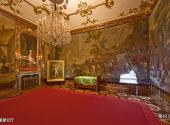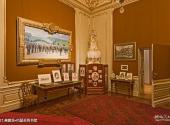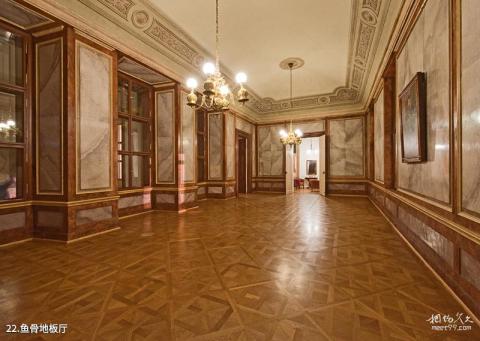
Scenic spot introduction:
Schönbrunn Palace (German: Schloss Schrunn) is a Baroque palace located in the southwest of Vienna, the capital of Austria. It was once the royal palace of the Holy Roman Empire, the Austrian Empire, the Austro-Hungarian Empire and the Habsburg dynasty. As one of the most beautiful Baroque palaces in Europe, it is also one of the most famous tourist attractions in Vienna.Attractions distribution:
The history of Schönbrunn Palace can be traced back to the medieval Katterburg. In 1569, Holy Roman Emperor Maximilian II bought this place, which included a house, a mill, a barn and a leisure orchard. From then on, it became the territory of the royal family. The garden of Katterburg was destroyed by the Hungarian army in 1605. After a simple restoration, it became the hunting palace of Matthias (reigned from 1612 to 1619). Legend has it that in 1612, Matthias discovered a beautiful spring here during a hunt. The drinking water of the spring was refreshing and sweet, so he named this spring "Schönbrunn". Matthias' successor Ferdinand II and his second wife Eleonora von Gonzaga were also keen on hunting and often used Schönbrunn as a hunting place. Ferdinand II died in 1637, and the queen who lived here alone decided to build a summer palace here and renamed the area "Schönbrunn". Ferdinand III's wife also lived in Schönbrunn after Ferdinand III's death. She and Eleonora von Gonzaga von Gonzaga was also a great lover of art, and the garden continued to be expanded during his residence; in the mid-17th century, concerts were often held in the royal garden, and Leopold I (reigned 1658-1705) participated as a composer; in 1683, Turkey besieged Vienna for the second time, and this summer palace and its garden became victims of the Ottoman war; after the war, in 1686 Leopold I ordered the Austrian Baroque architect Johann Bernhard Fischer von Erlach to rebuild a palace for his son, Crown Prince Joseph I. The central part of the palace was completed in 1700, including the main hall of the hunting palace. Joseph I and the Queen lived in the bedroom on the west side of the palace near the garden, and the bedroom for guests was on the east side, and the palace in the building at that time is still preserved in today's Schönbrunn Palace chapel , Blue Stairs and other buildings; the War of the Spanish Succession broke out in 1701. Due to lack of funds, the construction of the Schönbrunn Palace wing was slow and was not completed until the death of Joseph I.After the death of Joseph I and his queen, Charles VI inherited the palace in 1728 and gave it to his daughter Maria Theresa; Charles VI died suddenly in 1740, and Maria Theresa began her reign as heir in Schönbrunn Palace, making it the center of royal and political life. During Maria Theresa's reign, Schönbrunn Palace underwent a major renovation. The project was in charge of the early classical architect Nikolaus von Pacasi from Austria and Italy from 1743 to 1763. The hunting palace was rebuilt and expanded into a luxurious royal residence that could accommodate more than a thousand people. Most of the Rococo art decorations of Schönbrunn Palace also came from this era. During this period, Maria Theresa's husband Franz I and artists from Lorraine also made a lot of expansions to the royal gardens, adding formatted flower beds, buildings, sculptures and other decorations, as well as zoo and botanical gardens.
Franz Joseph I, who married the beautiful Princess Sissi, was born in Schönbrunn Palace in 1830. It was also his favorite residence and the place where he lived the longest. He completed his final journey of life here in 1916.
Scenic spot qualifications:
World HeritageScenic spot features:
Princess Sissi, architecture, gardens, Baroque, royal gardens, palacesAttraction Address
Travel Guide
Travel Notes of Travellers:
- Travel Guide: 12-Day Eastern European Tour Guide 2017
- Traveling Alone: 15 Days in Europe (Part 2) Austria
Best time to visit:
All seasons
Tourist Transportation
Scenic spot location:
Europe > Austria > Vienna
How to get there:
In Vienna, take subway U4 to Schonbrunn, tram 60 to Hietzing, tram 10, 58 or bus 10A to Schönbrunn Palace.
Scenic area map:
Click to expand the scenic area map
Attraction Tickets
Schönbrunn Palace Ticket Prices:
The Royal Gardens and Observation Deck are open to the public free of charge.
Inside the palace:
22 room package: 10.5 euros/person
40 room package: 13.5 euros per person
Three-attraction ticket (Schönbrunn Palace Imperial Furniture Collection, Hofburg, Sissi Museum Imperial Silverware Exhibition): 23.5 euros/person
Scenic area opening hours:
Schönbrunn Palace
April-June, September, October: 08:30-17:00
July and August: 08:30-18:00
November to March: 08:30-16:00
Royal carriage
April-October: 09:00-18:00
November to March: 10:00-16:00 (except Mondays)

